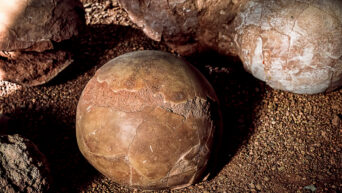An ancient fossil was given new life when scientists created a walking robot based on its remains. Using molds of the fossil’s skeleton, as well as state-of-the-art robotic technology, and examining the fossilized footprints of the ancient creature, a walking robotic recreation now gives us more insight as to what this animal may have lived like.
Researchers at the Swiss Federal Institute of Technology Lausanne (EPFL) and Humbolt University of Berlin uncovered a way of understanding the way certain ancient animals may have walked, and built the robot based on specifications to show the creature’s gait. The Orobates pabsti lived 300 million years ago, but two decades ago an incredible, nearly fully intact fossil of the ancient animal was uncovered in Germany. Because of the incredible fossil, scientists were given a unique chance to examine its full structure, which made it an ideal choice to base the robot on. The animal itself may show us more about ourselves than previously thought, as the tetrapod (meaning it walked on four legs) was a species of amniote, a land dwelling creature similar to reptiles and early mammals.
Scientists can learn a great deal about where modern animals come from by examining how ancient creatures lived, and this robot incredibly displays the mechanics of O. pabsti in amazing detail. The combination of ancient animals and cutting edge technology is a fascinating glimpse into what science can teach us.
































